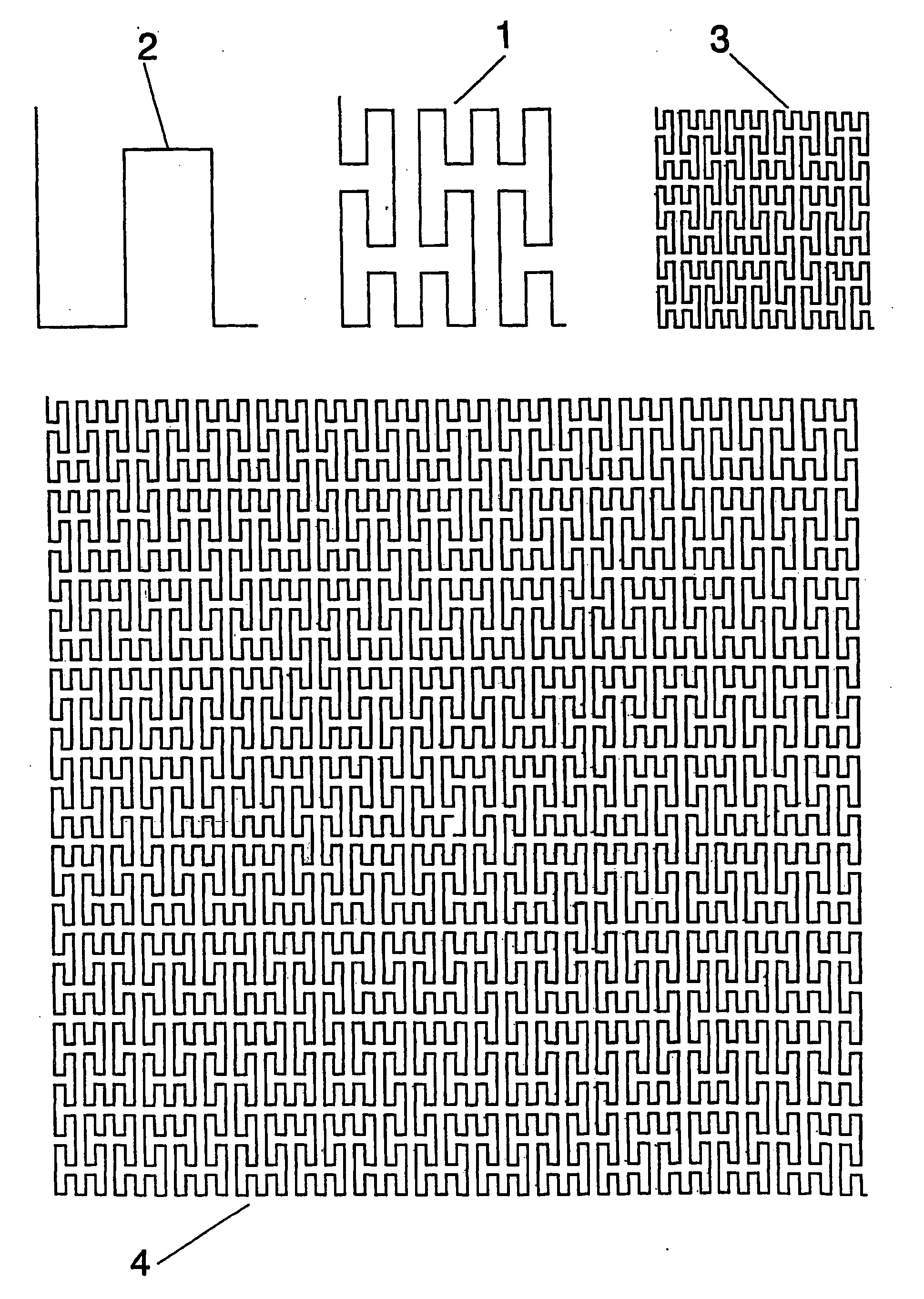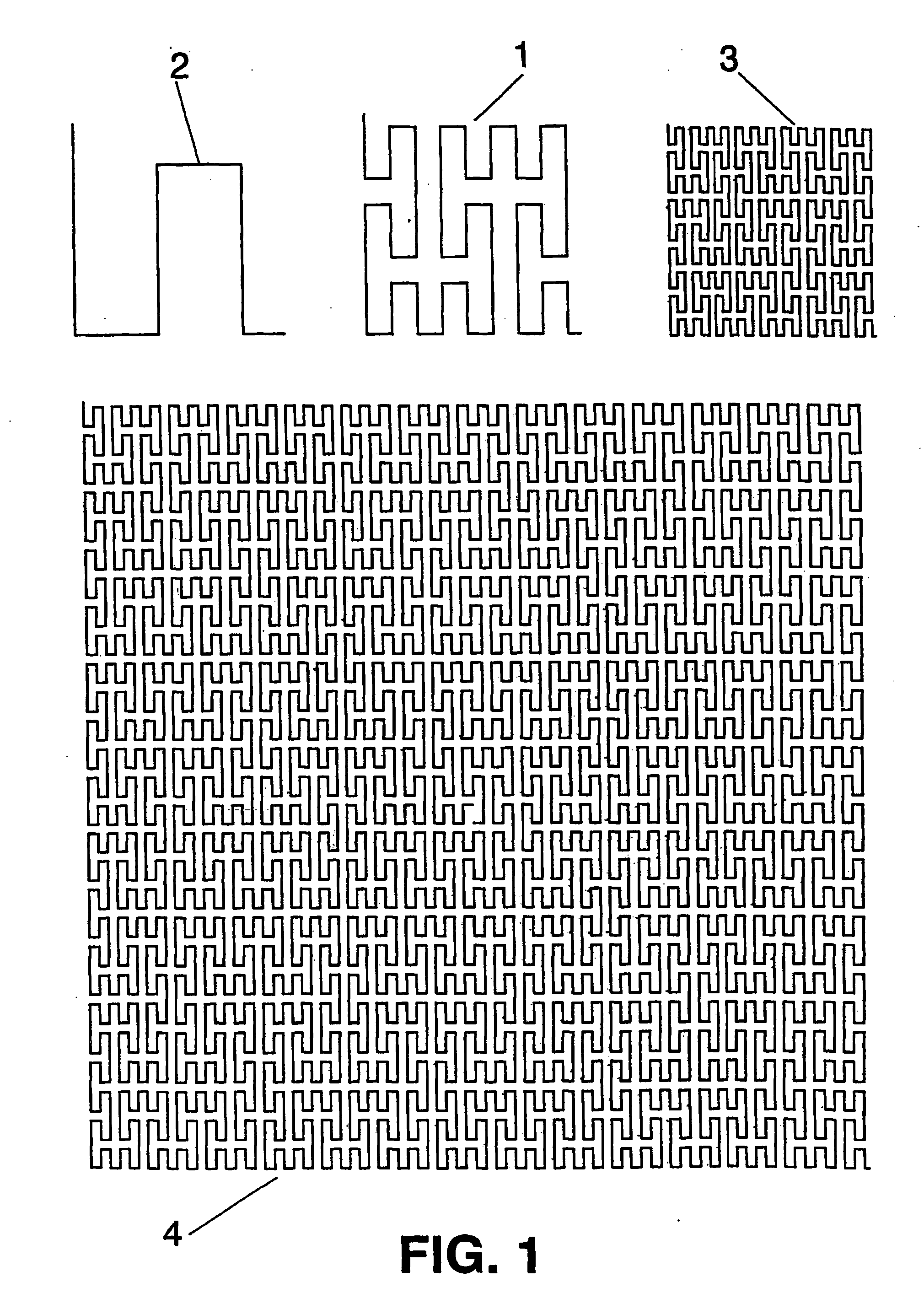Space-filling miniature antennas
a space-filling, miniature antenna technology, applied in the structural form of antennas, antenna supports/mountings, radiating elements, etc., can solve the problems of low efficiency, radiating resistance, and difficulty in packing a resonant antenna into a space which is small in terms of wavelength at resonance, so as to improve the performance of other classical antennas.
- Summary
- Abstract
- Description
- Claims
- Application Information
AI Technical Summary
Benefits of technology
Problems solved by technology
Method used
Image
Examples
Embodiment Construction
[0041]FIG. 1 and FIG. 2 show some examples of SFC curves. Drawings (1), (3) and (4) in FIG. 1 show three examples of SFC curves named SZ curves. A curve that is not an SFC since it is only composed of 6 segments is shown in drawing (2) for comparison. The drawings (7) and (8) in FIG. 2 show another two particular examples of SFC curves, formed from the periodic repetition of a motive including the SFC curve (1). It is important noticing the substantial difference between these examples of SFC curves and some examples of periodic, meandering and not SFC curves such as those in drawings (5) and (6) in FIG. 2. Although curves (5) and (6) are composed by more than 10 segments, they can be substantially considered periodic along a straight direction (horizontal direction) and the motive that defines a period or repetition cell is constructed with less than 10 segments (the period in drawing (5) includes only four segments, while the period of the curve (6) comprises nine segments) which ...
PUM
 Login to View More
Login to View More Abstract
Description
Claims
Application Information
 Login to View More
Login to View More - R&D
- Intellectual Property
- Life Sciences
- Materials
- Tech Scout
- Unparalleled Data Quality
- Higher Quality Content
- 60% Fewer Hallucinations
Browse by: Latest US Patents, China's latest patents, Technical Efficacy Thesaurus, Application Domain, Technology Topic, Popular Technical Reports.
© 2025 PatSnap. All rights reserved.Legal|Privacy policy|Modern Slavery Act Transparency Statement|Sitemap|About US| Contact US: help@patsnap.com



